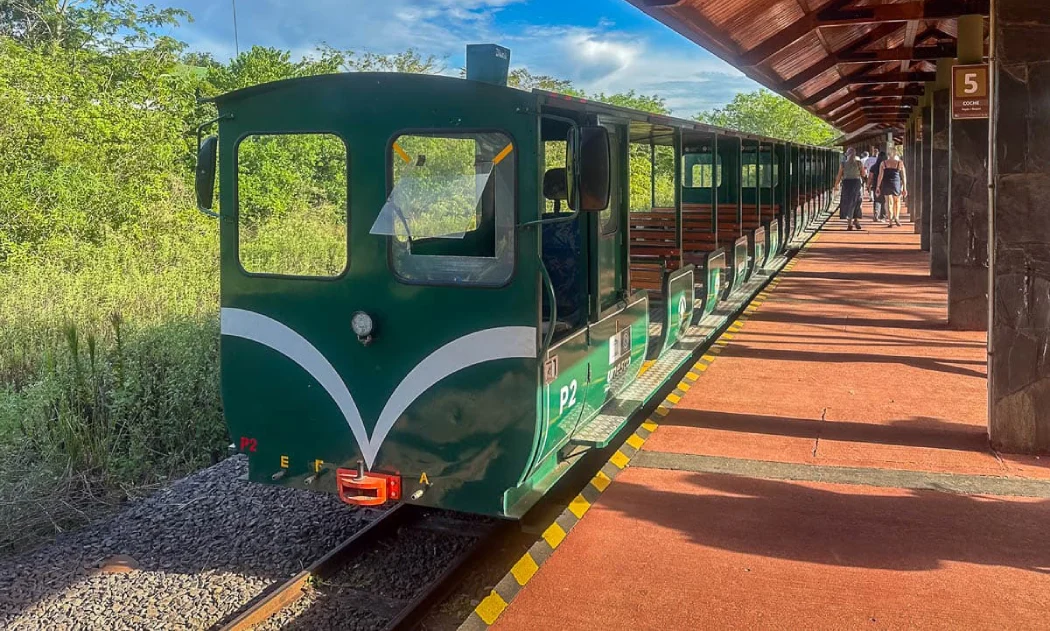Everything you need to know before visiting Iguazu Falls
How to plan and tips for visiting Iguazu Falls

Iguazú Falls is one of the most spectacular natural wonders on Earth, located on the border of Argentina and Brazil.
Planning ahead can make all the difference, from booking tickets and choosing tours to knowing what to pack and understanding park rules.
There’s something for every traveler—thunderous waterfalls, lush rainforest, thrilling boat rides, aerial views, etc.
This guide covers everything you need to know for a smooth, safe, and unforgettable visit to Iguazú Falls.
Choose between the Argentina side or Brazil side tours, or experience both in a full-day tour. For an extra thrill, add a Macuco Safari or Gran Aventura boat ride, or take a helicopter tour for breathtaking aerial views.
Booking tickets and tours
- Book your Falls tickets online to save time and secure the best entry slots. Both Argentina’s Iguazú National Park and Brazil’s Iguaçu National Park offer online ticketing.
- Reserve early during peak season (December to February) to get preferred time slots.
- Choose the type of experience: guided walking tours, self-guided trails, boat rides, helicopter tours, or full-day tours covering both sides.
Choosing your experience
- Guided tours provide insights into the flora, fauna, history, and geology of the falls.
- Boat rides offer an adrenaline rush, bringing you close to the base of the waterfalls.
- Helicopter rides give stunning aerial views of the full Iguazu Falls.
- Some full-day tours combine the Argentine and Brazilian sides for a complete experience.
- Self-guided trails are ideal for photography, wildlife spotting, and a flexible pace.
Timing and crowd management
- Arrive early to avoid crowds and enjoy quieter trails.
- Plan around eco-train schedules on the Argentine side, which connect park entrances with key attractions. Trains run every 30 minutes; the last train to Devil’s Throat departs at 3.30 pm.
Extra tips for a smooth visit

- Mix guided tours, boat rides, and self-guided trails to match your energy and interests.
- Consider optional upgrades like eco-train rides, Devil’s Throat walkways, or Gran Aventura boat rides for a more complete experience.
- Bring essentials like water, comfortable shoes, sunscreen, insect repellent, and a waterproof jacket for the boat rides.
Accessibility
- For travelers with mobility issues: Most major viewpoints are wheelchair accessible, especially on the Brazil side.
- Transport options: Eco-trains, buses, and taxis are available inside both parks.
- Parking: Available near the main entrances of both parks; buses and larger vehicles have designated areas.
What to pack/ bring
- Clothing: Lightweight, breathable clothes; a waterproof jacket or poncho for waterfall spray.
- Footwear: Comfortable walking shoes or sandals with good grip.
- Essentials: Hat, sunglasses, sunscreen, insect repellent.
- Electronics: Waterproof phone case or camera for waterfall photos.
- Extras: Reusable water bottle, snacks, and a small backpack for day trips.
Rules and guidelines
Environmental protection: Do not litter; use designated trash bins.
Wildlife respect: Do not feed or disturb animals in the park.
Restricted areas: Follow marked trails; some areas are off-limits for safety.
Drone use: Drones are prohibited in both parks without official permission.
Safety tips: Stay on marked paths, especially near the waterfalls and slippery rocks.
Cross-border travel tips

- Check visa requirements if you plan to visit both Argentina and Brazil. Some nationalities, like US, Canadian, and Australian citizens, need a visa for Brazil even for tourism visits.
- Always verify the latest requirements and ensure your passport is valid for at least six months beyond your stay.
- Allocate 1-1.5 hours for border crossing if planning to see both sides. Have some Argentine Pesos and Brazilian Reais for local purchases.
Best time to visit
Peak season: December to February (hot, humid, and crowded).
Shoulder season: April to May and September to November (pleasant weather, fewer crowds).
Off-peak: June to August (cooler, but some trails may be muddy).
Safety and health tips
Hydration: Bring water to stay hydrated during long walks.
Insect protection: Use mosquito repellent; wear long sleeves if possible.
Medical preparedness: Carry basic medication for allergies or motion sickness.
COVID-19/ health checks: Check local regulations; masks may be required indoors or on transport.
